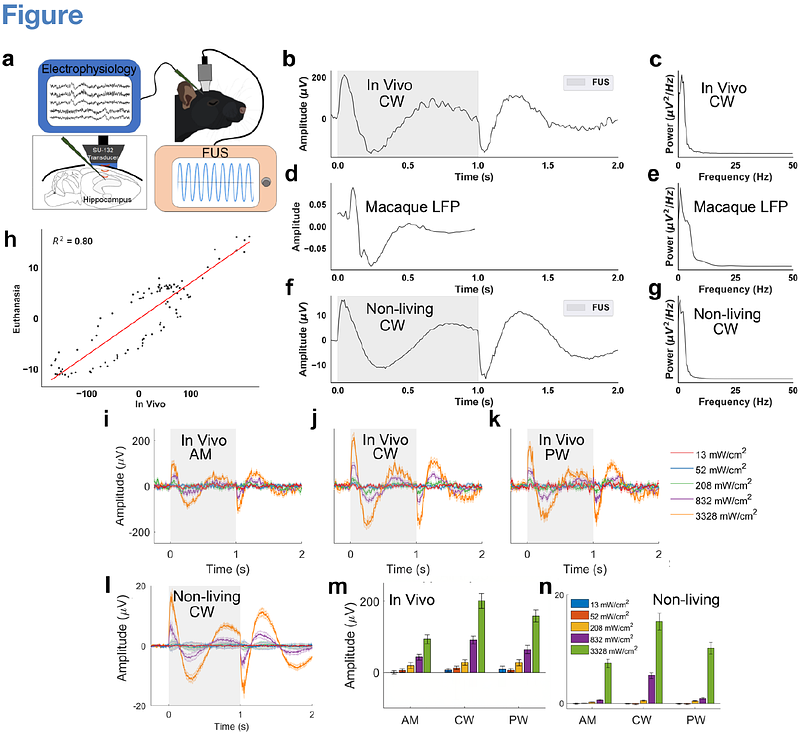Mechanical Artifacts During Transcranial Focused Ultrasound Mimic Biologically Evoked Responses

Mechanical Artifacts During Transcranial Focused Ultrasound Mimic Biologically Evoked Responses
Nguyen, D. T.; Konofagou, E.; Dmochowski, J. P.
AbstractLow-intensity transcranial focused ultrasound stimulation (tFUS) has emerged as a promising modality for non-invasive neuromodulation, offering deep brain penetration and high spatial precision. However, the electrophysiological effects of tFUS remain poorly understood, in part due to challenges distinguishing genuine neural responses from mechanical artifacts. In this study, we investigated the electrophysiological signatures captured during tFUS of the anesthetized rat hippocampus using silicon microelectrodes. We observed a strong, stereotyped local field potential (LFP) response that was time-locked to the onset and offset of sonication and resembled sensory-evoked potentials. Critically, the same waveform was observed in euthanized animals, confirming a non-biological, artifact-driven origin. The artifact scaled with acoustic intensity and was most pronounced under continuous-wave sonication. These findings suggest that electrode movement induced by ultrasound can generate artifactual LFP signals that closely mimic authentic neural responses. Our results underscore the need for caution when interpreting in situ electrophysiological recordings during tFUS and advocate for alternative, artifact-resistant readouts such as fiber photometry to unambiguously detect neuromodulatory effects.